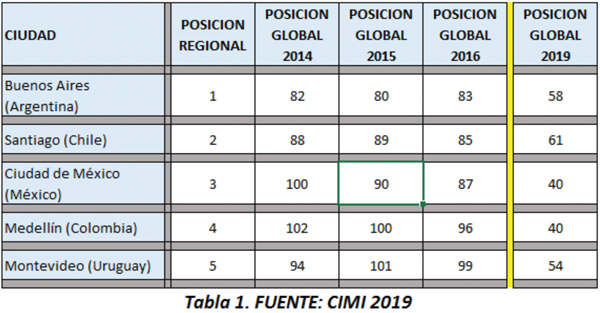Smart Cities — Better Cities For Everyone
By Rolando Barja
The migration of habitants to urban areas has become one of the main problems in the development of today’s cities. With the great combination of people and various technologies, we use creativity to make these “new cities” more sustainable and efficient.
For this reason, it is necessary to plan resources that guide us in the establishment of objectives, involving projects, employee performance, and personal development, with specific and measurable criteria. The term “smart city” happens to be a city capable of using information and communication technology (ICT) with the aim of creating better infrastructures for citizens. Based on this, we guarantee:
- Sustainable development
- Education improvement
- Greater social programs
- An increase of the quality of citizens’ lives
- Greater efficiency of available resources
- Active citizen participation
- Greater public safety
- Healthcare
- Urban planning
Central and Latin America is the developing area with the highest urbanization rate on the planet, and the trend estimated by the United Nations indicates that, in 2050, 90% of its population will live in cities. That’s quite a challenge for governments, since the great challenges of these urban agglomerations have not yet been solved, which include: poverty, insecurity, pollution and transport.
From a technological point of view, a smart city is a global ecosystem in which multiple closely linked processes coexist and that it is difficult to approach or value individually.
The spread of the smart cities concept has led many to seek solutions to the challenges of cities in technology. Some of these advances were discussed during the First Latin American Forum on Artificial Intelligence (AI) and the Internet of Things (IoT) in Sustainable and Intelligent Cities, which was held in Buenos Aires in 2018, accepting the transformative potential of artificial intelligence and the Internet of Things to revolutionize traditional urban infrastructures in Latin America. The combination of high-speed, low-latency connectivity and technologies such as distributed computing, IoT and machine learning, as well as big data analysis is enabling the transformation to smarter and more sustainable cities. In 2025, trends will reach about 1 trillion IoT sensors, with approximately 8 billion people connected.
Concluding with the adoption of the “Declaration of Buenos Aires,” this calls for action in Central and Latin America to analyze the policy innovation required to capitalize on new technologies towards the transition to smart cities:
- Raise awareness of the role of AI and IoT in the development of smart cities.
- Modify public policies to prepare for a future of AI.
- Promote the production and supply of smart devices, software, applications, services and infrastructures, as well as the adoption of AI technology to create smart cities based on local needs.
- Encourage collaboration and public-private partnerships.
- Harnessing the potential of AI to secure the IoT.
- Create a smart city platform where best practices and essential data can be shared, and benchmarks established.
- Incorporate AI solutions to public services.
In order to have a global reference, Cities in Motion Index (CIMI) 2019 was consulted, carried out in conjunction with the IESE Business School of the University of Navarra. It includes statistical support and concepts to define which cities are global in Latin America, identified as being more innovative, globalized and environmentally sustainable. The research includes the results for 180 cities, of which we highlight Central and Latin America.
In 2017, according to the CIMI report, Buenos Aires led the Latin American ranking of smart cities, followed by Santiago de Chile, Mexico City, Medellín and Montevideo. The other cities in Latin America are in a position below 100th place. In Table 1, it is possible to observe variations in position reaching 40th place in the cities of Mexico and Medellín.
Therefore, it is necessary to strengthen research and innovation systems so that they contribute to the development of the entire urban ecosystem. On the other hand, in a region where only Chile (33) and Mexico (48) occupy one of the first 50 places in the Global Competitiveness Index (GCI), the need to implement reforms to increase productivity is evident and execute policies that favor the development of innovative companies with an international vision.
Becoming a smart city in Latin America is vital to our emerging cities. As it seems simple, however it will require investing in technology with sensors and surveillance cameras. In addition, it will be necessary to invest time for its planning, observation, evaluation, execution, investment and data controls automatically. Seeking to empower young people and new generations to explore the different options that, from science and technology, will build a BETTER CITY FOR EVERYONE!


Rolando Barja,
MBA CWTS Ing,
SCTE Adjunct Instructor
rbarja@scte.org
Engineer Rolando Barja, Master of Business Administration with mention in General Management, HFC Networks Director of COTAS R.L., speaker at Telecommunications Conferences in United States, Argentina, Panama, Colombia. President of Central and Latin American Chapter of Telecommunications Engineers of the SCTE•ISBE, author of the book “Enfoques de Telecomunicaciones para Redes Convergentes”, author of several articles published in outstanding journals of the international community and Winner of the award for Outstanding International Engineer in Denver 2017.
Shutterstock

